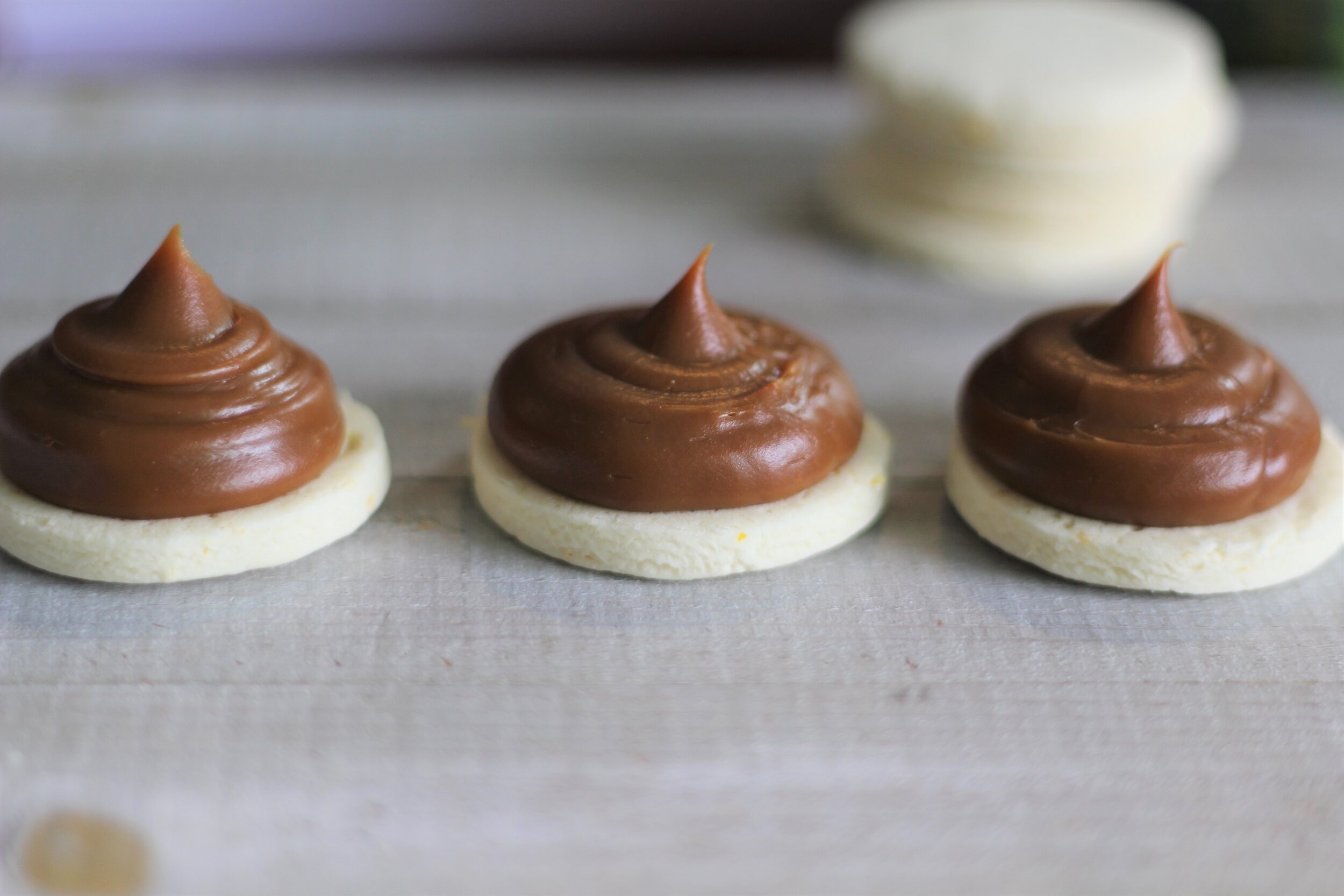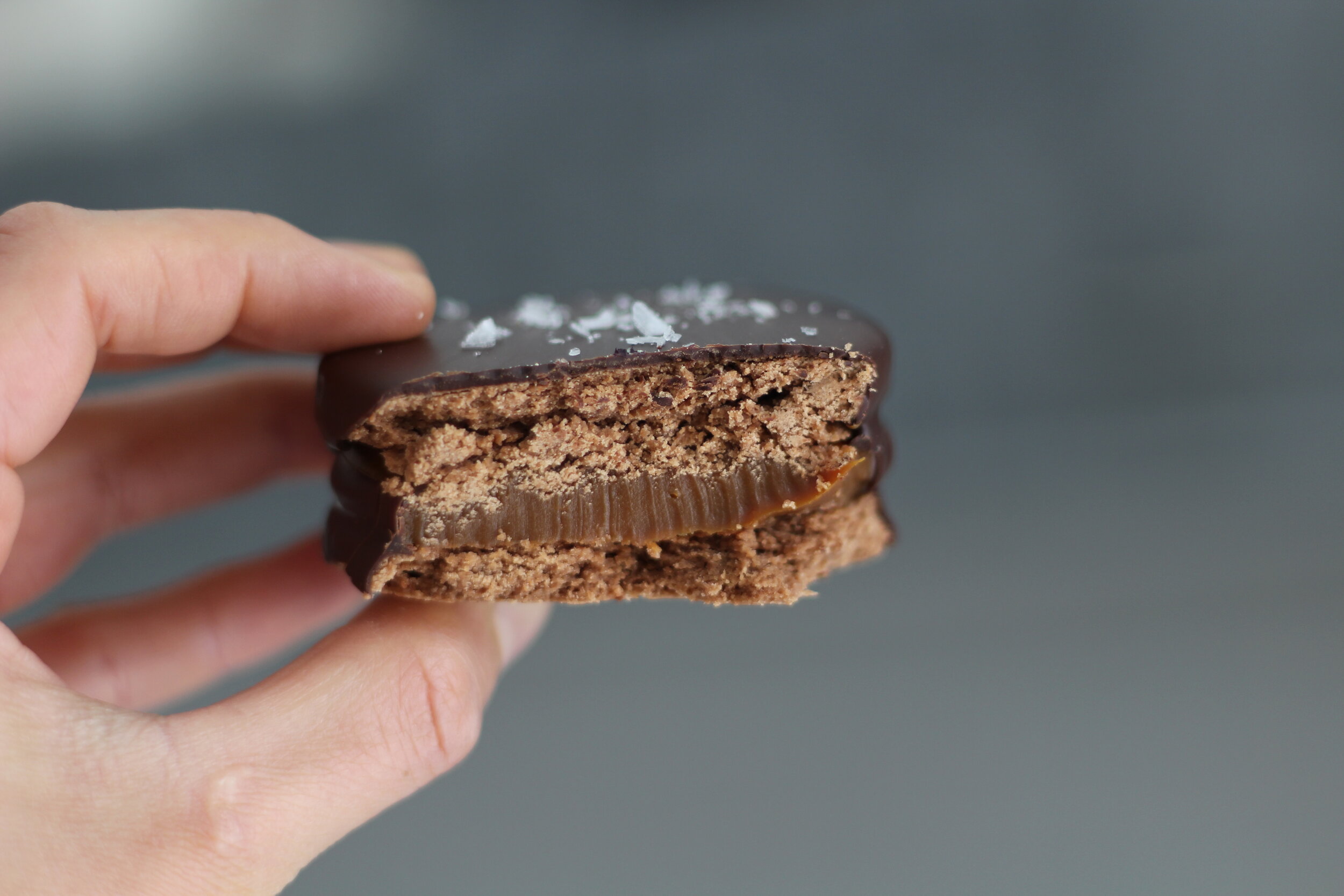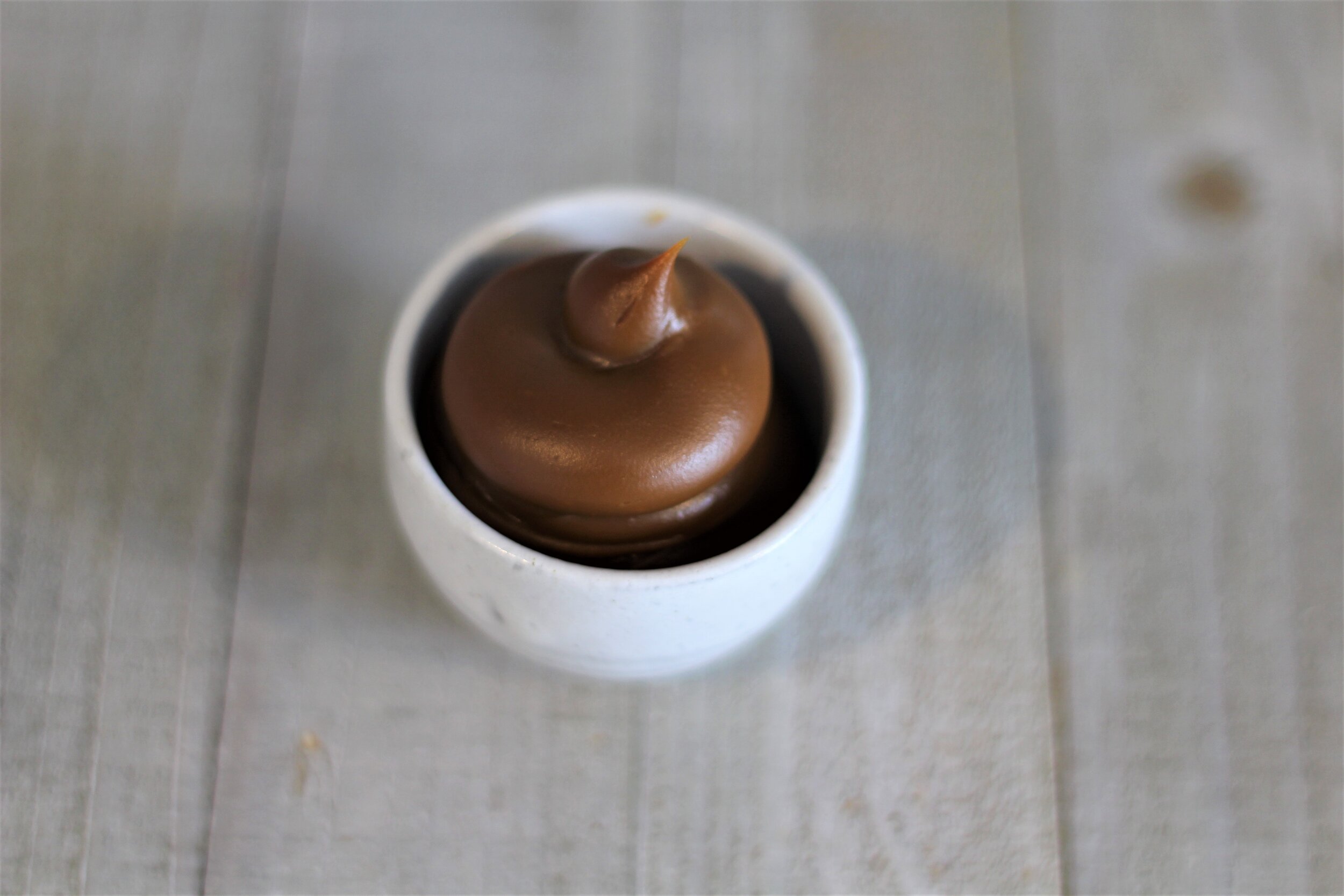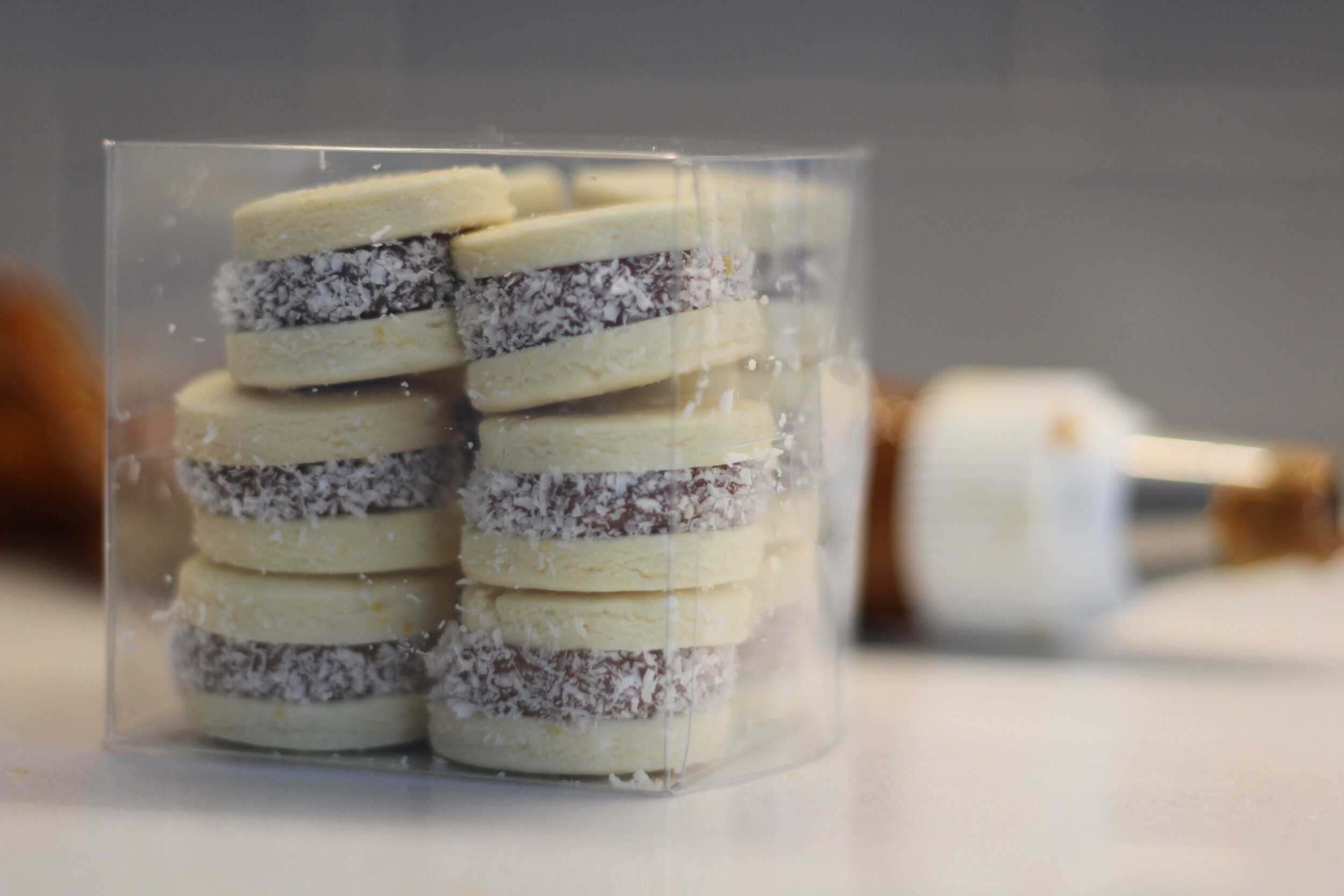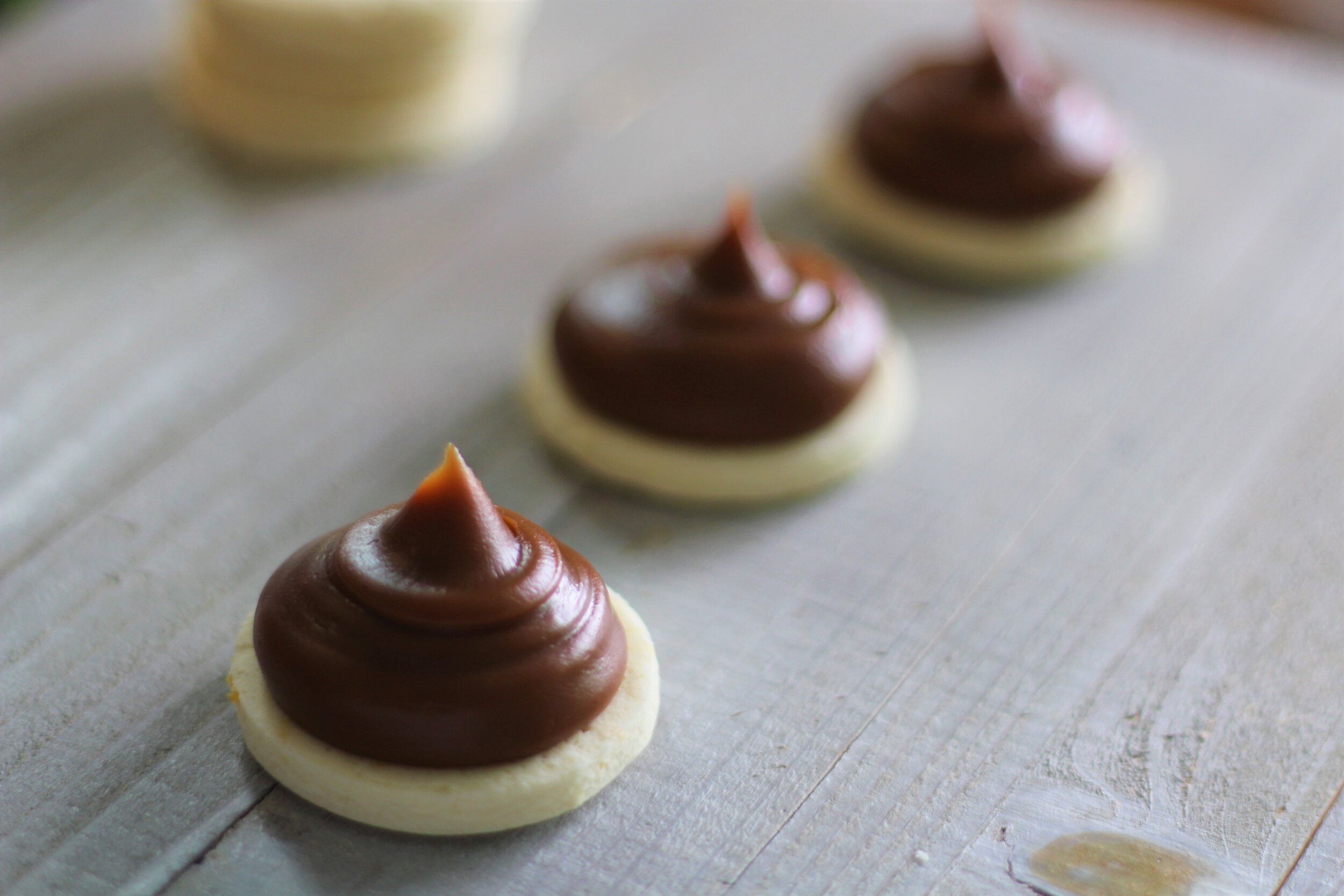The Story Behind "Dulce de Leche"
Most of our alfajores are filled with a delicious gooey spread called “dulce de leche”. Its name translates from Spanish as “sweet from milk”, referring to the fact that it is made by heating sweetened milk slowly until it caramelizes. It is one of the most popular confections in South America, often spread over breakfast foods like toast or added to desserts like cakes. However, the treat varies depending on the country in which it is made and there are many theories about which country made it first.
Some claim that dulce de leche was discovered in 1804 when Napoleon’s cook heated a blend of milk and sugar for far too long. Others believe it was first made in Indonesia before being taken to the Philippines around the sixteenth century. According to this theory, the Spanish discovered the treat after conquering the Philippines and then took it back to Spain. Later, they took the treat with them on their conquests to the Americas.
However, one of the most popular theories is that it was discovered in in the 19th century by the maid of Argentinian politician Juan Manuel de Rosas. Legend has it that she was cooking milk and sugar when she was called away and forgot all about her pot. Upon her return, she realized that the milk had turned into a thick sauce that was sweet and brown. Coincidentally, the first historical reference to the dessert appears in an 1829 record of a peace meeting between Juan Manuel de Rosas and a political enemy.
Because of this belief in the Argentinian origin, Argentina attempted to declare dulce de leche as a piece of official Argentinian cultural heritage in 2003. They did not succeed, as Uruguay claimed it should be considered part of the cultural heritage of the Rio de la Plata region (the river between Uruguay and Argentina). Chile, Colombia, and Perú have also made similar claims.
Regardless of the true origin, several countries around the world have their own version of the treat, each varying in ingredients, color, and consistency. Listed below are just a few:
In Argentina, the traditional recipe consists of milk, sugar, a little vanilla, and a little baking soda.
In Uruguay, a simple blend of just milk and sugar is preferred.
In Chile, it is called “manjar” and can include butter laced with cannabis.
In Peru, it is also called “manjar” and is a lighter color
In the Dominican Republic, it is made with cinnamon, plus equal parts milk and sugar so that it has a fudge-like consistency.
In Puerto Rico, it is made with unsweetened coconut milk.
In Mexico, it is called “cajeta” and is made with goat’s milk.
In Cuba, it is prepared from milk that has curdled.
In Colombia, it is similar to the traditional Argentinian version but called “arequipe”.
In El Salvador, the sweetened milk is cooked so that it has a texture like that of soft brown sugar rather than a cream.
In Panama, it is cooked so that it crystallizes on the top of the cream.
Our dulce de leche is inspired by the traditional Uruguayan recipe and can be found in treats such as our Alfajor de Maicena or our Classic Chocolate Alfajor. Try one if you haven’t already!
Sources:
https://vamospanish.com/discover/make-dulce-de-leche-recipe/
https://theculturetrip.com/south-america/uruguay/articles/a-brief-history-of-dulce-de-leche/
https://www.finedininglovers.com/article/cooking-classics-dulce-de-leche

